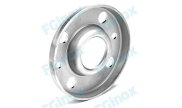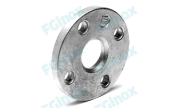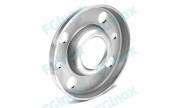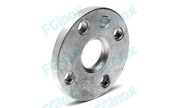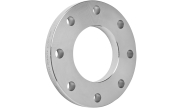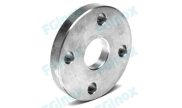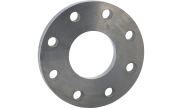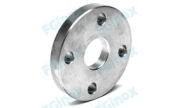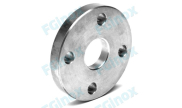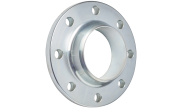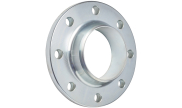Local Storage seems to be disabled in your browser.
For the best experience on our site, be sure to turn on Local Storage in your browser.
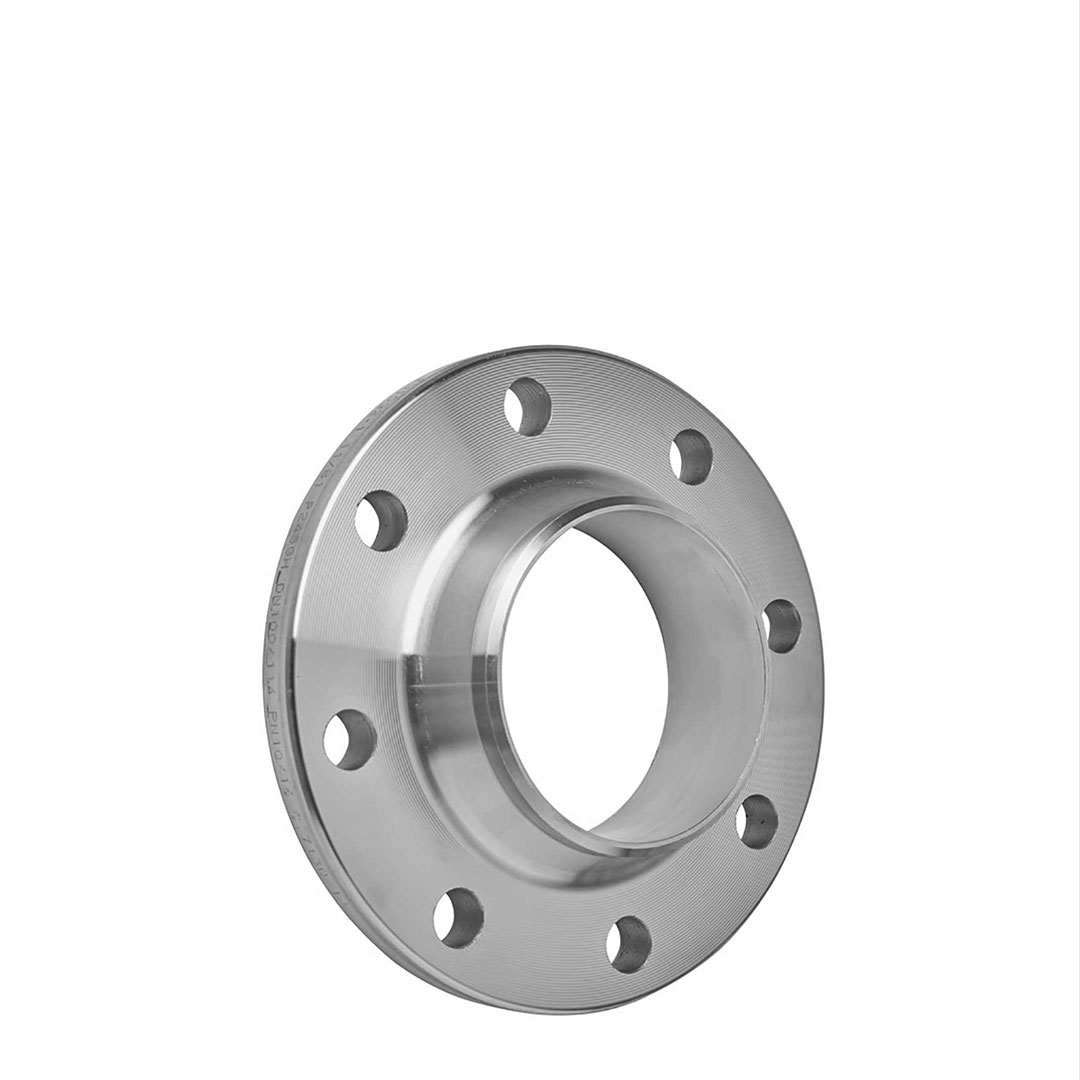
Flanges
What is a flange?
A flange is a device that connects two elements in a piping network. The flanges fit together in pairs thanks to bolts and gaskets between them to guarantee tightness. The benefits of flanges are easier maintenance (inspection and cleaning) and easier removal of one part of the installation.
Flanges are manufactured in different materials like stainless steel, cast iron, aluminium, plastic etc. The pipe material and the application determine the flange material.
Outside flange diameter, drilling diameter and number and diameter of bolts are determined by standards according to operating pressure: EN 1092-1, EN 1092-2, EN 1759-1 / ANSI B16.5.
The connection to the pipe can be made in different ways:
- Threaded flanges, hubbed or not. Also known as screwed flanges, they are used with pipes that have a male thread. Thanks to their threaded bore, they can easily and quickly connect to the pipe. As no welding is necessary, these flanges are suitable for explosive areas where welding is hazardous. It is ideal for small diameters, low pressure and moderate temperature applications.
- Weld neck flanges or welding neck flanges. In the case of critical conditions on the installation, such as high pressure and temperature, the better option is weld neck flanges. The flange is machined to gradually match the inside diameter of the tube thanks to the tapered hub. The tapered hub provides reinforcement and reduces tension at the base of the flange to distribute it on the pipe with which it is welded. It prevents friction, erosion, turbulences and vibrations. The butt weld requires a qualified welder to provide a leakproof and durable connection.
- Slip-on flanges for welding. This flange is positioned at the end of the pipe or device and connected to the pipe by a fillet weld at both sides of the flange. These flanges allow an easy alignment of the assembly. This flange is cheaper than a weld neck flange and is suitable for low-pressure applications.
- Lap joint or loose flanges, always coupling with a stub end. The stub end is welded to the pipe, and the lap joint flange is free to rotate around the stub end. The benefit is more straightforward mounting: the flange swivels around the pipe, facilitating the alignment of bolting holes. Thus, loose flanges are often used for applications that require frequent dismounting. These flanges allow a cost-effective assembly. In the case of demanding applications with high-cost alloy pipe, the collar must be made of the same alloy as the pipe network, while the flange can be in carbon steel because it is not in contact with the fluid.
EN 1092-1 standard defines the type and the facing type of flanges, respectively identified by a figure and a letter.
Types of flanges
Type 01: Plate flange for welding
Type 02: Loose plate flange, with weld-on collar, lapped pipe end, weld ring neck, pressed collar with long neck or pressed collar
Type 04: Loose plate flange with weld-neck collar
Type 05: Blind flange
Type 11: Weld-neck flange
Type 12: Hubbed slip-on flange for welding
Type 13: Hubbed threaded flange
Type 21: Integral flange
Facing type of flanges
Type A: Flat face, suitable for low-pressure services, it is usually used for rating class pressure up to 150 lbs (PN20)
Type B: Raised face (RF) accounts for 90% of the market. Clamping forces is concentrated on the gasket. This facing type is suitable for high pressure. This assembly allows a gasket installation without complete disassembly during maintenance operations.
C/D, E/F and G/H facing types work by 2.
Type C: Tongue face
Type D: Groove face
They allow a great radial gasket fit, making them appropriate for extreme pressure and temperature conditions. The gasket is placed into the groove. A metal-core gasket is recommended because of the high pressure applied on the gasket when tightening.
The depth of the groove is always more significant than the height of the male flange tongue to avoid metal-metal contact of the bearing.
Type E: Spigot face
Type F: Recess face
These flanges are designed for severe conditions of use. A flange with a spigot face must always be associated with a recessed face flange. So, it is essential to choose the right connection flanges. The assembly ensures a good centring of the gasket and reduces the risks of leakage to the outside environment.
Type G: O-ring spigot face
Type H: O-ring groove face
They are suitable for high-pressure applications, above PN100. Usually, one founds it in the petroleum industry.

